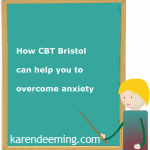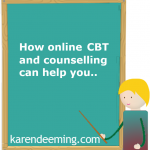How to develop healthier personal boundaries to help you:
• Feel less angry, stressed, resentful, exhausted, guilty and overwhelmed
• Enhance your self confidence and self esteem
• Increase your energy levels
So what are personal boundaries?
Personal boundaries are “the physical, emotional and mental limits we establish to protect ourselves from being manipulated, used, or violated by others. They allow us to separate who we are, and what we think and feel, from the thoughts and feelings of others”
Personal boundaries are guidelines, rules or limits that a person creates to identify for him or herself what are reasonable, safe and permissible ways for other people to behave around him or her and how he or she will respond when someone steps outside those limits. They are built out of a mix of beliefs, opinions, attitudes, past experiences and social learning.
Personal boundaries define you as an individual, outlining your likes and dislikes, and setting the distances you allow others to approach. They include physical, mental, psychological and spiritual boundaries, involving beliefs, emotions, intuitions and self-esteem.
How do you establish whether your boundaries are healthy?
Firstly ask yourself the following questions:
- Are you a people pleaser who frequently agrees to do things that you really don’t want to do?
- Do you experience difficulties standing up for yourself?
- Do you allow insulting, off hand remarks from pushy, aggressive people because you are anxious or fearful of the consequences or of potential conflict?
- Are you over sensitive and often take things personally?
If you have answered yes to one or more of these questions then your boundaries are probably not as robust as they could be. We have all struggled with boundaries from time to time especially with our parents and those closest to us.
We are not taught how to do this at school, so how can we be expected to know how to set healthy boundaries?
I believe boundary setting should be a mandatory item on the school curriculum.
What is a healthy boundary then?
Ideally, the ability to set flexible boundaries.
According to Nina Brown, there are four main types of psychological boundary:
- Soft – A person with soft boundaries merges with other people’s boundaries. Someone with a soft boundary is easily manipulated.
- Spongy – A person with spongy boundaries is like a combination of having soft and rigid boundaries. They permit less emotional contagion than soft boundaries but more than rigid. People with spongy boundaries are unsure of what to let in and what to keep out.
- Rigid – A person with rigid boundaries is closed or walled off so nobody can get close to him/her either physically or emotionally. This is often the case if someone has been physically, emotionally, psychologically or sexually abused. Rigid boundaries can be selective which depend on time, place or circumstances and are usually based on a bad previous experience in a similar situation.
- Flexible – This is the ideal. Similar to selective rigid boundaries but the person has more control. The person decides what to let in and what to keep out, is resistant to emotional contagion, manipulation and is difficult to exploit.
Whilst a healthy relationship depends on the emotional space provided by personal boundaries, co dependent personalities have difficulties in setting such limits, so that defining and protecting boundaries efficiently may be for them a vital part of regaining mental health.
Before providing you with tips on how to set flexible, healthy boundaries, I thought it might be helpful to share with you: How healthy boundary setting techniques have benefited me in both my professional and my personal life:
Following extensive boundary setting training on my Psychotherapy Master’s Degree, the knowledge I acquired , outlining how to set consistent, timely, flexible boundaries, has made a significantly, positive difference to my life.
For example:
- I mostly now do things that I want to as well as have to
- The development of sound, assertiveness skills have provided me with confidence to say no nicely and achieve what I want both at work and in my personal relationships
- My energy levels have increased, as I no longer experience high levels of time stress, caused by previously booking up my diary months ahead, as a result of over committing myself, saying yes to most social and work-related events
- I now purposefully surround myself with people who champion and bring out the best rather than the stress in me. In other words, I am now equipped to manage and communicate with nay sayers, bullies and intimidating, negative, aggressive people much more effectively
- Nowadays, I rarely feel tired, resentful and guilty
Over to you:
Here’s some flexible, healthy boundary setting techniques that work for me:
The first step is self awareness, that is, acknowledging that you experience difficulties with boundary setting.
Begin to say no nicely:
For most of us, the act of saying no is simple it takes a second. It’s not saying no that bothers us though it’s the consequences that concern us.
You can say no nicely by using words and phrases such as:
- Thank you for asking me
- That sounds interesting
- I’m honoured to be asked
- That’s really kind
Avoid using but as it carries negative connotations and instead use words like and however.
Leave a positive lasting impression – good luck
Let me know how you get on ask me another time or I’d love to know how you get on.
A question and answer example:
Question
I’m organising an amazing event and I’m looking for someone just like you to help with the organising. It will be great fun and it’s all for a good cause.
Answer
Wow well first of all thanks for asking. I’m honoured. However, I’m going to miss this one as I’m committed to several important things at the moment which all need my time and attention. It wouldn’t be fair on them, or you, if I said I could get involved with something else and then did a poor job with everything. Let me know how it goes though.
Situation specific examples:
Saying no to your boss at work
Wow thank you for thinking about me. It sounds like a great project and I’m up for a challenge. To take it on and do a brilliant job I need your help. Could you help me to find a couple of hours a day by reassigning some of my other responsibilities? I know Giles has done data input in the past so he would be great at that.
Saying no to an angry person
I feel uncomfortable when you shout at me, so I’m going to leave the room until you calm down.
Responding to a bully, naysayer or a critical person
It’s not OK with me that you continually put me down and criticize my appearance so I’d like you to stop doing this.
When you feel put on the spot
“I don’t know what I’m doing that evening yet and I have a policy of not making decisions right away so I’ll get back to you later in the week.
(If the person persists and tries to manipulate or make you feel guilty, keep repeating this statement to them over and over again).
Cancelling a previous commitment you have made:
I know I agreed to help you with the flower show, after reviewing my diary though, I now realise that I won’t be able to give it my best attention so I’m happy to help you find someone else by the end of next week.
Time saving examples:
Q Would you buy a newspaper when you drop Charlie off at the scouts?
A Yes of course. And I need your help with something. Would you empty the dishwasher while I’m out.
Q Could you take care of the phones while I’m away? Ill be back in an hour or so..
A No problem at all, and actually you could help me. Would you mind dropping this off at the Post Office while you’re out?
A few assertiveness techniques
Assertiveness is: “the ability to honestly express your opinions, feelings, attitudes, and rights, without undue anxiety, in a way that doesn’t infringe on the rights of others”.
Here are some useful examples of assertive statements:
- Thanks for your suggestion. I’ll take that into consideration
- No, I am not busy on Tuesday, but I want to keep it that way
- Could you tell me more information so that I can understand what you are trying to say?
- I will have to get back with you about that
- I think I understand what you are saying, however I am in disagreement
- When is a good time for us to talk about something that has been bothering me?
- I feel you are being very aggressive toward me
- I get upset when you start shouting at me
I Statements
These make for great conversation openers because blame is avoided, and may allow the other person to save face or take responsibility before becoming emotional. If you are used to arguing with someone and suddenly try this, you may get quick improvements in communication.
If the other person becomes aggressive or passive you can continue with “I” statements.
For example, “I will continue this discussion when we both agree not to name call.” Or for the passive person, “I realize that you are not ready to talk with me and I respect that and I know I can’t make you. I will be ready when you decide to talk.”
I’ll sign off with an inspirational quote: “if you never give up, you never fail.”


![Karen_Deeminga[1]](http://www.karendeeming.com/wp-content/uploads/2015/09/being-practice-self-portrait-e1541437891746.jpg) Welcome to my site. if you have any queries then please
Welcome to my site. if you have any queries then please

